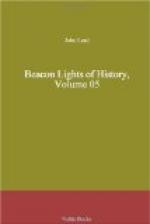The only absurdity is seen when radical Protestantism adopts the church of pomps and liturgies. When the Reformation was completed, men sought to build churches where they could hear the voice of the preacher; for the mission of Protestantism is to teach, not to sing. Protestantism glories in its sermons as much as Catholicism in its chants. If the people wish to return again to ritualism, let them have the Gothic church. If they wish to be electrified by eloquence, let them have a basilica, for the voice of the preacher is lost in high and vaulted roofs. If they wish to join in the prayers and the ceremonies of the altar, let them have the clustering pillars and the purple windows.
Everything turns upon what is meant by a church. What is it for? Is it for liturgical services, or is it for pulpit eloquence? Solve that question, and you solve the Reformation. “My house,” saith the Divine Voice, “shall be called the house of prayer.” It is “by the foolishness of preaching,” said Paul, that men are saved.
If you will have the prayers of the Middle Ages and the sermons of the Reformation both together, then let the architects invent a new style, which shall allow the blending of prayer and pulpit eloquence. You cannot have them both in a Grecian temple, or in a Gothic church. You must combine the Parthenon with Salisbury, which is virtually a new miracle of architecture. Will that miracle be wrought? I do not know. But a modern Protestant church, with all the wonders of our modern civilization, must be something new,—some new combination which shall be worthy of the necessity of our times. This is what the architect must now aspire to accomplish; he must produce a house in which one can both hear the sermon, and be stimulated by inspiring melodies,—for the Church must have both. The psalms of David and the chants of Gregory must be blended with the fervid words of a Chrysostom and a Chalmers.
This, at least, should be borne in mind: the church edifice must be adapted to the end designed. The Gothic architects adapted their vaults and pillars to the ceremonies of the Catholic ritual. If it is this you want, then copy Gothic cathedrals. But if it is preaching you want, then restore the Grecian temple,—or, better still, the Roman theatre,—where the voice of the preacher is not lost either in Byzantine domes or Gothic vaults, whose height is greater than their width. The preacher must draw by the distinctness of his tones; for every preacher has not the musical voice of Chrysostom, or the electricity of St. Bernard. He can neither draw nor inspire if he cannot be heard; he speaks to stones, not to living men or women. He loses his power, and is driven to chants and music to keep his audience from deserting him. He must make his choir an orchestra; he must hide himself in priestly vestments; he must import opera singers to amuse and not instruct. He cannot instruct when he cannot




